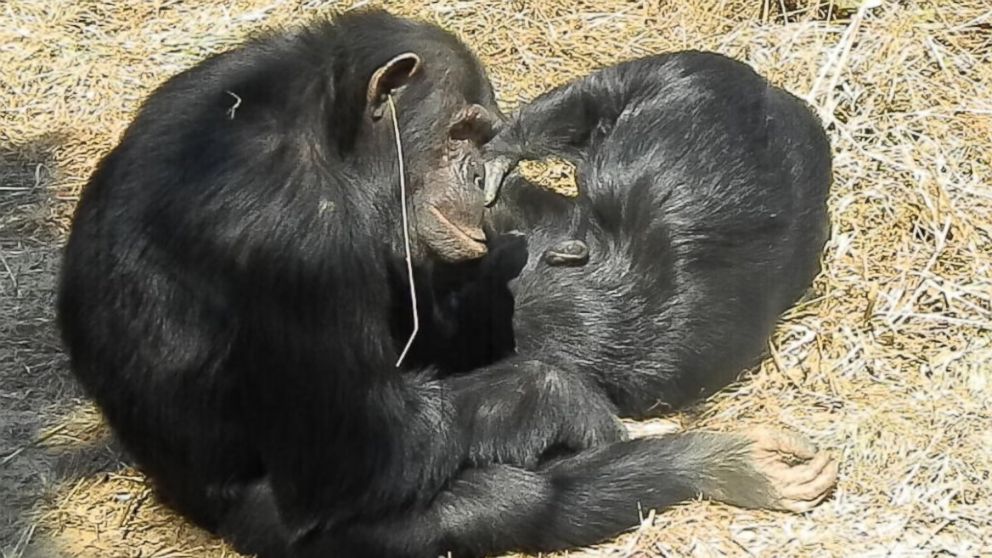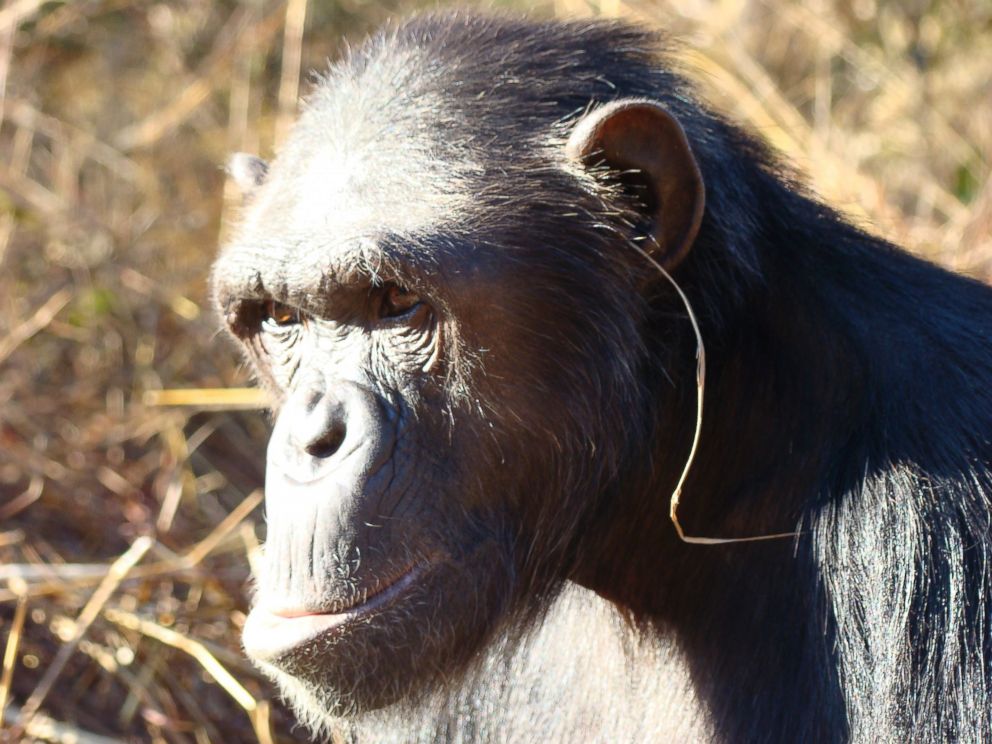Did a Chimp Invent Jewelry?
Scientists study chimps that wear grass "earrings."

— -- Over in Zambia there's a chimpanzee named Julie who has launched her own line of jewelry.
And it's a howling success. Now just about everybody wants a piece of it.
Julie's innovation came to the attention of scientists a few years ago when Edwin van Leeuwen of the Max Planck Institute for Evolutionary Anthropology in The Netherlands noticed something different about Julie.
She wandered around Zambia's Chimfunshi Wildlife Orphanage Trust sanctuary with a single blade of grass hanging from one ear. It wasn't an accident, it's not as though a piece of grass latched onto her ear as she stumbled through the tropics.
She wore it all the time. So if it fell out, she had to replace it. Whether she was playing, grooming, sleeping or doing whatever chimps do in the jungle, she had that blade of grass hanging from one ear.
That alone is pretty surprising, but what followed next was really "baffling," van Leeuwen said in an email.
How the Cuckoo Wages an 'Evolutionary Arms Race'
How the Clever Hummingbird Tortures Scientists
How The Naked Mole Rat Could Help You Live Longer
A short time after Julie was noticed with her ear's new appendage, her son Jack was observed wearing a blade of grass, hanging from one ear. Soon Julie's friends Kathy, Miracle and Val, followed suit.

Van Leeuwen and his colleagues, including several from Zambia, were so intrigued by the behavior that they spent a year studying more than 700 hours of videos, documenting everything that happened as Julie continued to promote her new line of physical adornments.
Eight of the 12 members of her colony adopted the trait, an important fact because it means the chimps were engaged in "social learning," a behavior that was thought years ago to be exclusively human. Significantly, three other chimp colonies in the compound that did not interact with Julie and could not even see her, never appeared with a blade of grass hanging from an ear, except for one brief exception that could have been accidental.
But why did Julie start doing it? I asked van Leeuwen if the humans who took care of the chimps wore earrings, but he insisted they did not. So the chimps weren't mimicking humans.
"It is still not known where Julie got this peculiar habit from," he said.
There is a suggestion here that goes beyond this particular research: Perhaps Julie just wanted to stand out from the crowd.
As simple as that sounds, it's really pretty remarkable. It implies self-awareness -- another trait once thought to be exclusively human. Julie recognizes who she is as an individual, and she wants to distinguish herself from her cohort.
Other research has shown that chimps are among a small group of animals -- including dolphins, several species of apes, and killer whales and elephants and, of course, humans -- with self-awareness.
Even Charles Darwin was intrigued with that possibility. While visiting the London Zoo in 1838 the father of evolution noticed an orangutan named Jenny who was obsessed with her own reflection in a mirror. Why would she do that if she didn't know who she was?
Many years later, psychologist Gordon Gallup Jr. used mirrors to show that several species recognized their own faces. They tried to rub off a rouge smear in their reflection that they could not feel. They had to see it, and recognize it as something that did not belong there.




